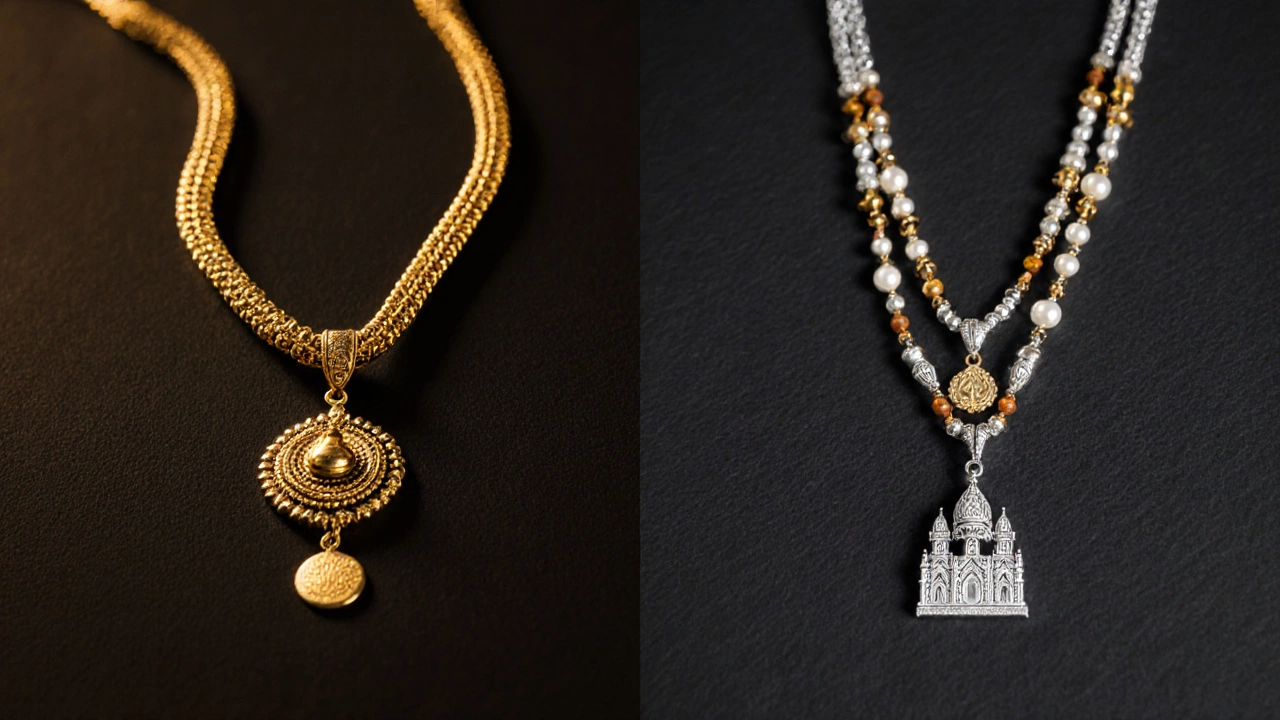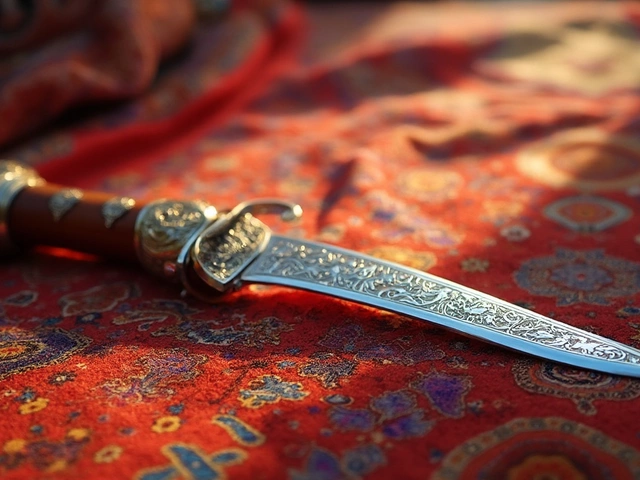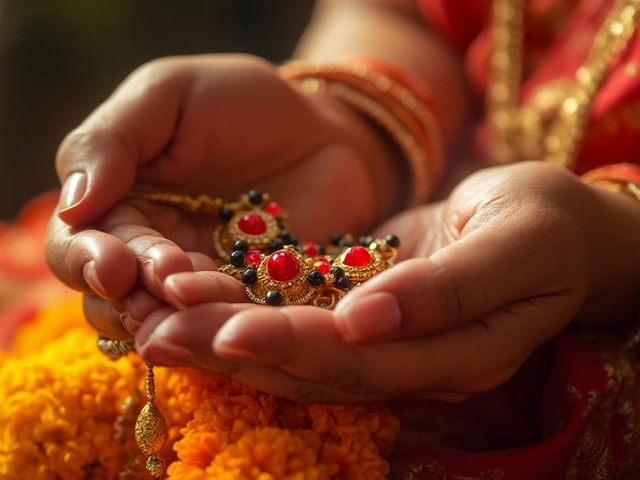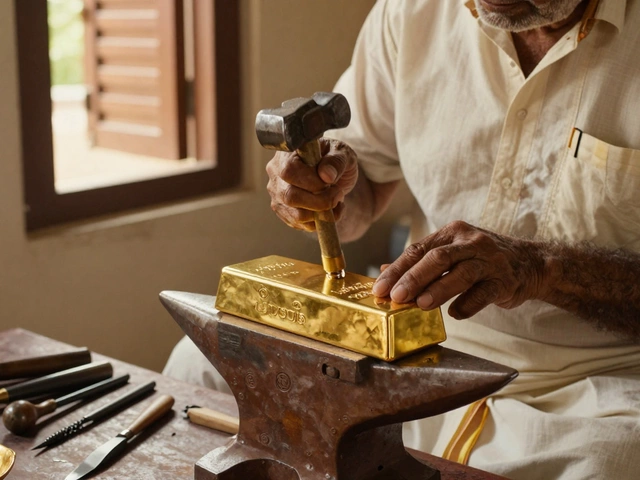Ever wondered why a mangalsutra from Delhi looks nothing like one from Chennai? The answer lies in centuries‑old regional aesthetics, material choices, and symbolic meanings. This guide breaks down the most noticeable differences so you can spot the origin of any mangalsutra at a glance and choose the style that feels right for you.
What is a mangalsutra?
A mangalsutra is a sacred necklace that a husband gifts to his wife during the wedding ceremony. It symbolizes marital unity, protection, and blessings for a long, happy life together. While the core idea stays the same across India, the design language diverges sharply between the north and the south.
Regional design philosophies
- North Indian mangalsutra: Emphasizes bold, chunky designs that often feature a single, thick gold chain with a pendant or a series of gold discs. The look is meant to be striking and to stand out against the vibrant saris worn in the north.
- South Indian mangalsutra: Prefers delicate, layered strands woven with gold, silver, and beads. The design tends to be lighter and more intricate, complementing the silk sarees and traditional gold jewelry of the south.
Both styles serve the same purpose, but the visual language tells a different cultural story.
Key material differences
The choice of metal and additional elements is a quick cue for regional origin.
- Gold is the dominant metal in North Indian mangalsutras, often 18‑22 karat, giving a heavy and lustrous feel.
- South Indian mangalsutras frequently blend silver with gold, creating a lighter, two‑tone appearance.
- Beads, pearls, and even tiny rudraksha beads appear more often in the south, adding texture and spiritual nuance.
Signature motifs and pendants
Motifs act as visual shorthand for regional identity.
- North Indian designs often showcase the Kalash (pot) or a simple gold disc called a nupur. The pendant may be a single round or a set of rectangular plates.
- South Indian mangalsutras celebrate temple architecture: you’ll see tiny gopuram silhouettes, lotus buds, and navaratna (nine‑gem) clusters.
- Both regions may incorporate the shree or om symbols, but the surrounding ornamentation distinguishes the style.
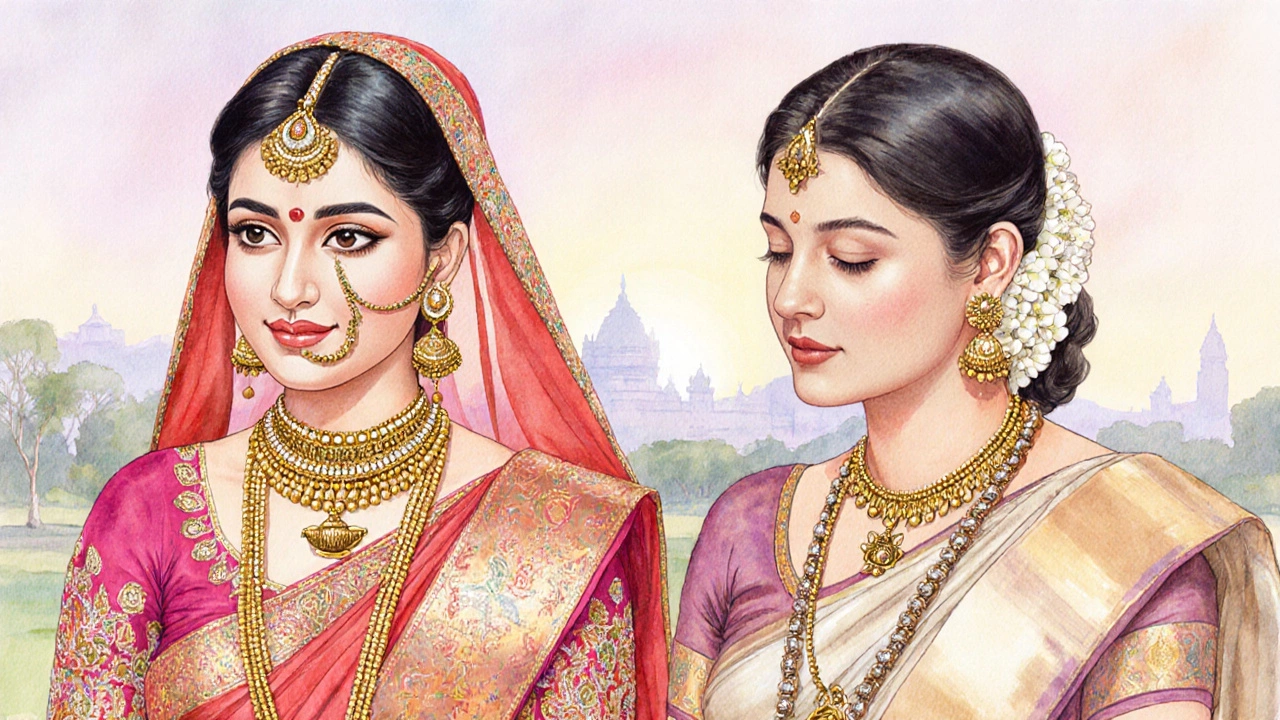
Length, layering, and wear
How the necklace sits on the neck also varies.
- North Indian mangalsutras are usually a single, sturdy chain about 18‑20 inches long, meant to sit high on the chest.
- South Indian versions are often two or three intertwined strands, ranging from 16 to 22 inches, allowing the wearer to adjust layers for comfort.
Symbolic nuances
While both protect the marriage, subtle symbolism differs.
- In the north, the heavy gold mass is believed to “anchor” the couple’s bond, reflecting the region’s preference for visibility and grandeur.
- In the south, the mix of gold and silver symbolizes balance-gold for prosperity, silver for harmony. The inclusion of beads like rudraksha adds a spiritual shield against negativity.
Buying guide: Picking the right style for you
- Identify your primary wardrobe: If you wear heavier, embroidered north‑Indian sarees or lehengas, a bold gold pendant works well. If you favor light silk or cotton drapes typical of the south, a layered, mixed‑metal design will complement better.
- Set a budget: Pure gold pieces are pricier. Opt for a silver‑gold blend if you want the traditional look without the heft.
- Check craftsmanship: Look for hallmarks on the gold, and ensure beads are securely knotted. Authentic south Indian mangalsutras often have a tiny stamped “M” indicating the maker’s guild.
- Consider comfort: If you have a delicate neck, the lighter south Indian style reduces strain during daily wear.
- Think about future generations: Traditional families tend to pass down the exact design. Choose a style that aligns with your family’s regional heritage.
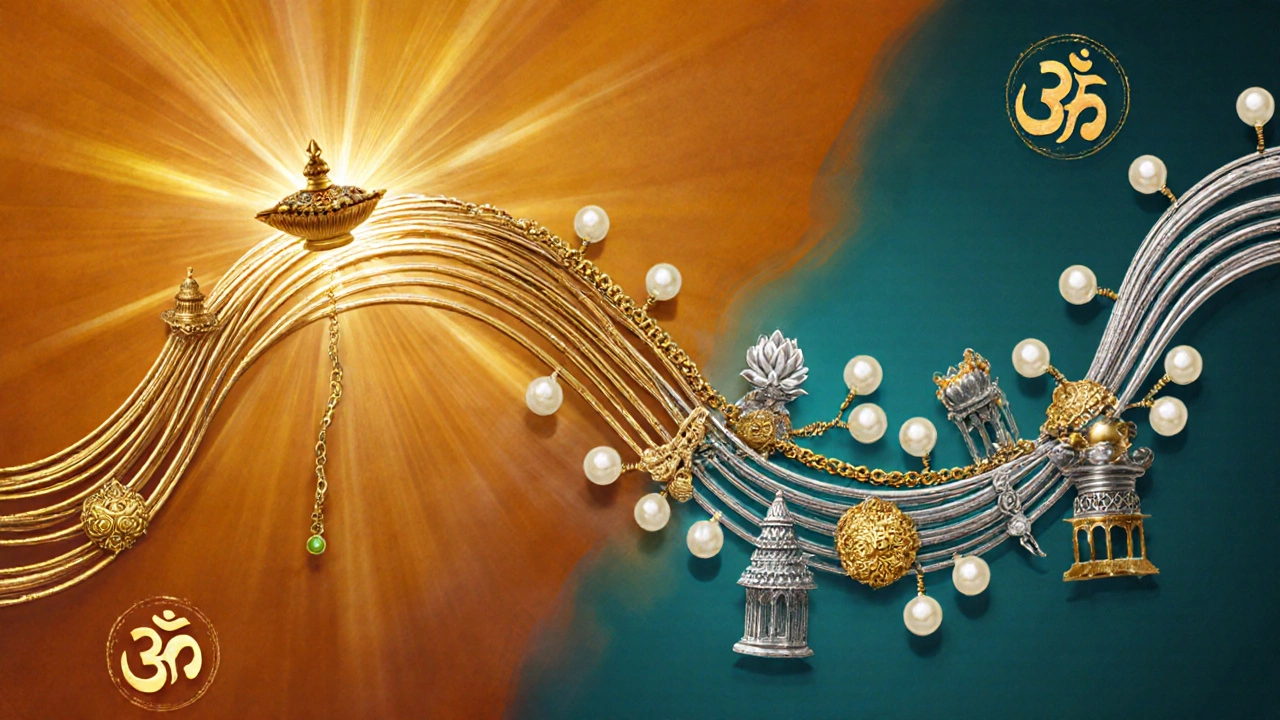
Care tips to keep the sparkle alive
- Store gold mangalsutras in a soft cloth pouch away from humidity to prevent tarnish.
- Silver‑mixed pieces should be polished with a mild silver cleaner every few months.
- Bead‑laden south Indian designs need gentle brushing with a soft toothbrush to keep pearls and rudraksha dust‑free.
- Avoid harsh chemicals; remove the necklace before swimming or using perfume.
Quick comparison table
| Aspect | North Indian | South Indian |
|---|---|---|
| Primary metal | Pure gold (18‑22K) | Gold & silver blend |
| Design focus | Chunky chain + single pendant | Layered strands + beads |
| Typical motifs | Kalash, round disc, shree | Temple gopuram, lotus, rudraksha |
| Length | 18‑20 inches (single chain) | 16‑22 inches (multiple strands) |
| Weight | Heavier, noticeable | Lightweight, flexible |
| Symbolic emphasis | Prosperity & visibility | Balance & spiritual protection |
Wrapping up
Whether you gravitate toward the bold gleam of a North Indian mangalsutra or the intricate elegance of a South Indian strand, both pieces carry the same promise - a lifelong bond. Understanding the material, motifs, and cultural cues helps you honor tradition while picking a design that fits your personal style and comfort.
Frequently Asked Questions
Can I wear a North Indian mangalsutra with South Indian outfits?
Yes. The heavy gold chain can complement a richly embroidered South Indian saree, but it may feel heavier than the traditional layered look. If comfort is a concern, choose a lighter gold‑silver blend.
Is silver allowed in a traditional mangalsutra?
In South Indian customs, silver is common and considered auspicious. In the North, pure gold is preferred, but many modern families accept mixed‑metal designs.
How do I verify the authenticity of a mangalsutra?
Look for a hallmark stamp (usually 916 for 22K gold). Reputable jewelers also provide a certificate of purity. For silver, a 925 stamp indicates sterling quality.
Can a mangalsutra be passed down to future generations?
Absolutely. Many families treat the mangalsutra as an heirloom, adding new pendants or beads over time while preserving the original core design.
What is the best way to clean a mangalsutra with pearls?
Use a damp soft cloth and mild soap. Avoid soaking pearls, as excessive moisture can degrade their luster.
